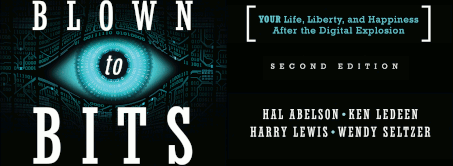Google Books Settlement: “A Bridge Too Far”
Monday, February 8th, 2010 by Harry LewisThat’s how the Department of Justice describes the Amended Settlement Agreement, or ASA–the version that Google and the Authors and Publishers came up with after digesting the various objections to the original proposal, including the DOJ’s objections. You can download the DOJ’s 31-page brief here. It is an exceptionally well-written brief, and I don”t mean just by the standards of legal writing. A few key paragraphs follow:
… [W]idespread lawful electronic distribution and use of copyrighted works, including in-print, out-of-print, and so-called “orphan” works, holds vast promise. Breathing life into millions of works that are now effectively dormant, allowing users to search the text of millions of books at no cost, creating a rights registry, and enhancing the accessibility of such works for the disabled and others are all worthy objectives. …
[T]he ASA suffers from the same core problem as the original agreement: it is an attempt to use the class action mechanism to implement forward-looking business arrangements that go far beyond the dispute before the Court in this litigation. As a consequence, the ASA purports to grant legal rights that are difficult to square with the core principle of the Copyright Act that copyright owners generally control whether and how to exploit their works during the term of copyright. Those rights, in turn, confer significant and possibly anticompetitive advantages on a single entity – Google. Under the ASA as proposed, Google would remain the only competitor in the digital marketplace with the rights to distribute and otherwise exploit a vast array of works in multiple formats. Google also would have the exclusive ability to exploit unclaimed works (including so-called “orphan works”1) without risk of liability. …
[A]lthough Google’s activities are commercially motivated, its business plan would generate numerous public benefits. The ASA would achieve these benefits, however, in spite of and not in furtherance of the basic premises of the Copyright Act. …
Google’s exclusive access to millions and millions of books may well benefit Google’s existing online search business. Google already holds a relatively dominant market share in that market.18 That dominance may be further entrenched by its exclusive access to content through the ASA. Content that can be discovered by only one search engine offers that search engine at least some protection from competition. This outcome has not been achieved by a technological advance in search or by operation of normal market forces; rather, it is the direct product of scanning millions of books without the copyright holders’ consent and then using Rule 23 to achieve results not otherwise obtainable in the market.
These points are not technicalities. They go to the heart of the case. As I said earlier, I feel that a high-noon moment is coming on, a showdown between Google, those representing themselves as the spokespeople for authors and publishers, the US government, and Judge Chin. Eric Saltzman, counsel to Lewis Hyde in the objections posted here earlier, has expressed to me his surprise that the process could have reached this point–he might have expected that the parties would have not only attempted to address the DOJ objections to the original proposed settlement, but would have sought some confirmation from the DOJ that they had succeeded. As it is, they have made a lot of changes without gaining a lot of DOJ support.
High noon is still scheduled to occur on February 18.

July 14th, 2010 at 3:48 am
Assessing the money flow is another essential element in the company technique format, so as to sustain a regular cash flow to meet the important capital requirements. Probability of monetary crisis and also the ways of crisis management must be mentioned in the structure. The company technique must consist from the marketing plans and strategy leading towards the expansion from the company.